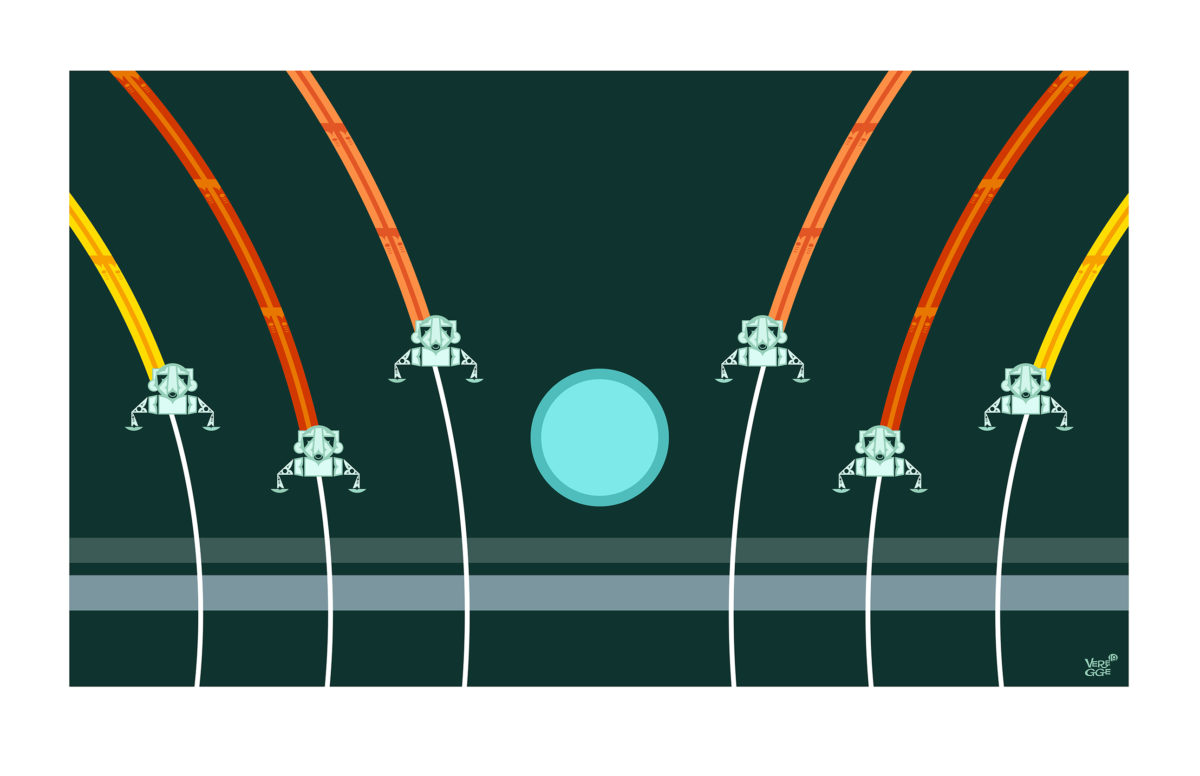Leap (Six Lunar Landings)
EXHIBITION:
CONSTELLATIONThe six successful manned missions to the moon were Apollo 11 (July 20, 1969), Apollo 12 (November 19, 1969), Apollo 14 (February 5, 1971), Apollo 15 (July 30, 1971), Apollo 16 (April 21, 1972), and Apollo 17 (December 11, 1972).
Armstrong piloted “Eagle” to a touchdown on the Moon at 4:17 p.m. Eastern Daylight Time on July 20, 1969 with less than 30 seconds worth of fuel left in the Lunar Module. Six hours later, Armstrong took his famous “one giant leap for mankind.” Aldrin joined him, and the two spent two-and-a-half hours drilling core samples, photographing what they saw, and collecting rocks. After more than 21 hours on the lunar surface, they returned to Collins on board “Columbia,” bringing 20.87 kilograms of lunar samples with them. The two Moon-walkers had left behind scientific instruments, an American flag, and other mementos, including a plaque bearing the inscription: “Here Men From Planet Earth First Set Foot Upon The Moon. July 1969 A.D. We Came In Peace For All Mankind.”
During the final mission to the Moon, the crew roamed for 33.80 kilometers through the Taurus-Littrow valley in their rover, discovered orange-colored soil, and left behind a plaque attached to their lander “Challenger,” which read: “Here Man completed his first exploration of the Moon, December 1972 A.D. May the spirit of peace in which we came be reflected in the lives of all mankind.” Thus ended the Apollo manned missions.

